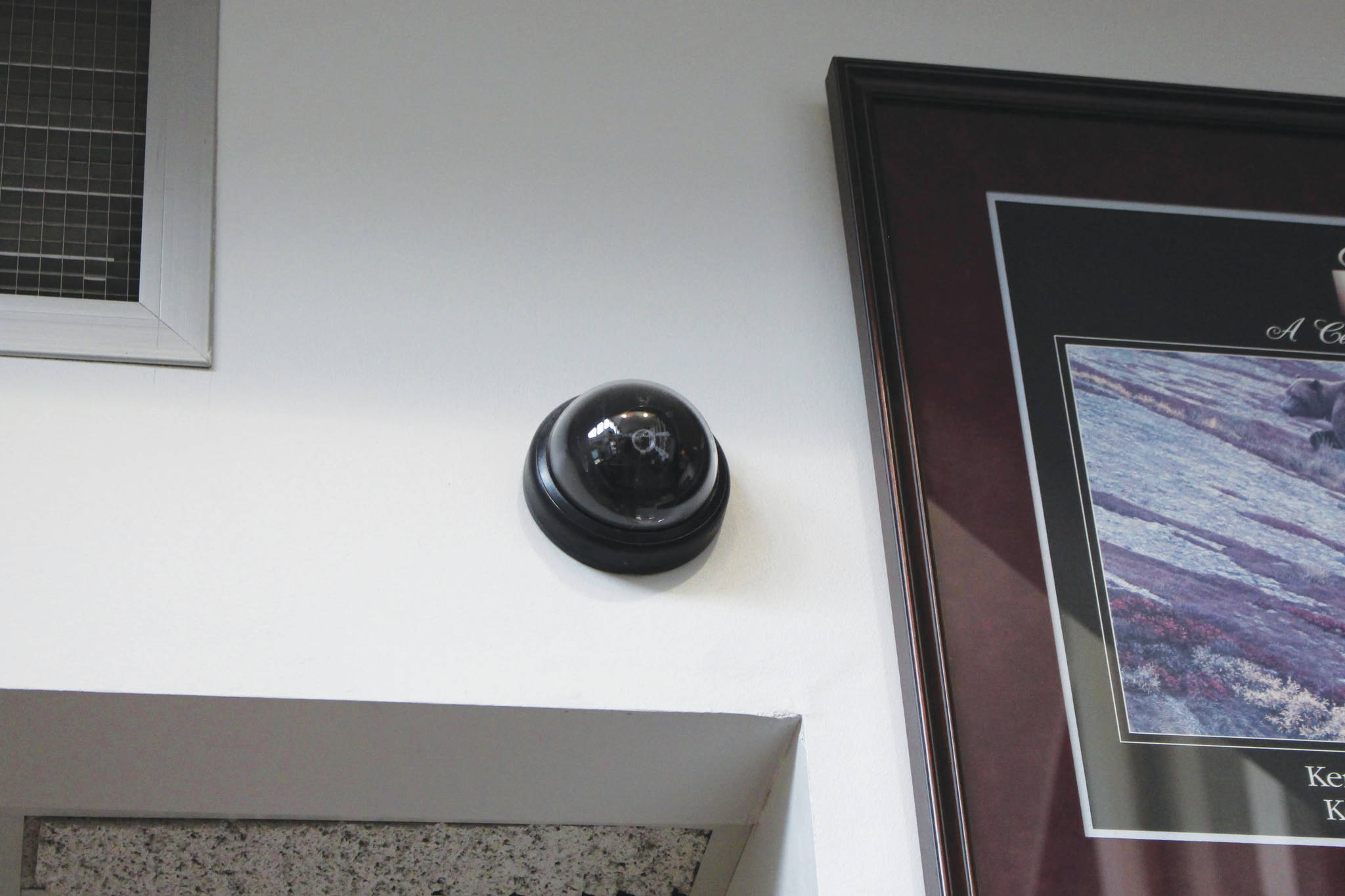The City of Kenai will use $135,000 in federal CARES money to purchase cameras and other equipment that will be used to count the number of people in some city buildings where capacity limits outlined by the city’s COVID-19 mitigation plan are enforced.
The Kenai City Council greenlighted the project, called the “People Counter Project,” after Kenai IT Manager Dan Castimore provided a memo and fielded questions from the council at Wednesday night’s meeting.
According to the memo, “Special cameras will be placed above doors and software will count people as they enter or exit.” Additionally, “digital signage” in the form of either tablets or televisions will display notices that the space is safe to enter. The type of digital signage used will be determined by what each location can accommodate.
City facilities impacted include the Kenai Community Library, which is currently limited to 50 people, the Kenai Recreation Center, the Kenai visitors center and the Kenai Senior Center, which will have occupancy limits when it reopens, according to the memo.
The money spent on equipment will vary by location. The Kenai Recreation Center, for example, does not have any network equipment and so will require new switches, wiring and WiFi, according to the memo. At the Kenai Senior Center and Kenai visitors center, current network equipment will need to be upgraded to handle the new technology.
Kenai City Manager Paul Ostrander addressed privacy concerns of some by noting the cameras do not record audio, are not actively monitored by anyone and do not always record to a server.
Kenai Mayor Brian Gabriel asked Castimore whether or not facial-recognition software would be associated with the technology. Castimore said it would not, and that they can configure the cameras so footage is blurred and tell the cameras to completely black out footage so no one can see it.
“Basically what this software does is it lives on a camera itself and it looks at the video and it’s able to detect a person walking in or two people walking in and it determines the direction that they’re walking in and it can then increment a counter based on that information,” Castimore said.
Councilman Jim Glendening raised concerns about spending money on a project specifically designed for COVID-19 protocols that may not be needed in the future. Ostrander said that footage would be blacked or blurred out because the objective of the project under the CARES Act funds is to count people, but that the cameras could be repurposed in the future for other uses like security.
The memo was amended during the meeting to say that the cameras can only be used for counting until the city council approves them for any other purpose.
Some council members were concerned about the lack of public input on the project.
Vice Mayor Bob Molloy said he would not be comfortable voting in favor for this reason, noting that because the project was presented as a laydown at the previous meeting and as a laydown at Wednesday’s meeting, there was no designated time for public input on the specific project.
“The public really hasn’t had a chance to see any of this,” Molloy said. “Now, right now because of COVID or whatever we’re not having that much participation, but still I’m not comfortable as a council member, you know — if a motion’s made I guess I’m saying I would oppose it because I feel that the process isn’t appropriate for taking an action tonight like that.”
Councilman Robert Peterkin also said he would vote no due to a lack of public input on the project.
“I really think no matter what we spend $135,000, whether it’s our money or CARES Act money or anything, we should let the people weigh in and then, knowing that they are actually cameras, I think it’s pretty important to allow the public to have a comment,” Peterkin said.
Ostrander said that adequate public notice was given when the city allocated money to the “non-payroll” bucket and that leaving the category broad allowed the city flexibility in determining how the money would be spent. The project funds will almost entirely use up the remaining funds in the “non-payroll” bucket, which was initially allotted $300,000 and currently has about $140,000.
“If we brought [the project] back to the council, it would not be in the form of an ordinance because there already has been public notice issued when council appropriated this money into that $300,000 bucket — that was public notice,” Ostrander said, adding that the legislation would have to be brought back in the form of a resolution.
Councilman Tim Navarre said he would be OK with moving forward with the project because of the time constraints put on the use of CARES money. If action on the project was delayed for another meeting, there would be less time to see the project all the way through before the expiration of CARES money before the end of this year. Ostrander said Thursday that installation and construction for the project will begin immediately because of this deadline.
The motion passed 4-3 with council members Navarre, Knackstedt, Pettey and Mayor Gabriel voting in favor and council members Peterkin, Glendening and Vice Mayor Molloy voting in opposition.

